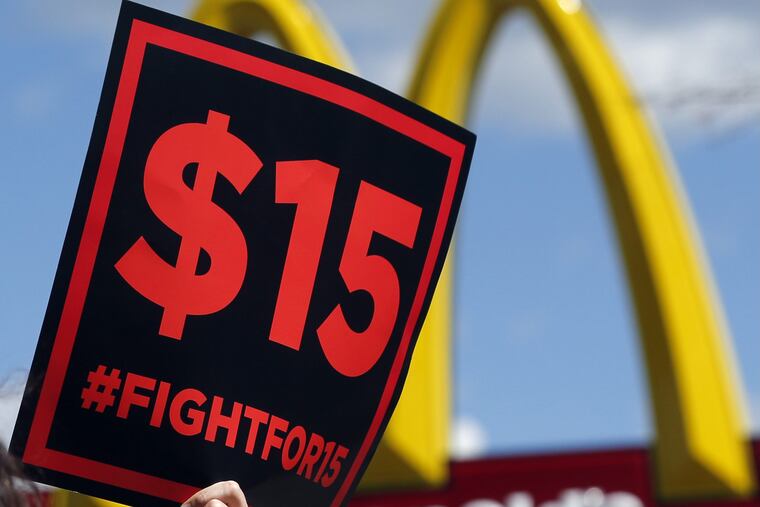If Philly government and Amazon can raise the minimum wage, why can’t our “Eds and Meds?” | Editorial
Universities and hospitals in Philadelphia could increase their positive impact on the city and set an important example of leadership by joining city government and Amazon in committing to a minimum wage of $15-an-hour for employees and contractors.

It's become clearer as the workplace and the economy have shifted, that the current minimum wage is not enough. The growing awareness of the gap between the minimum wage and a livable wage has led many cities and states to impose a minimum wage that is higher than the federal $7.25-an-hour.
Last month, the Port Authority of New York and New Jersey approved a minimum-wage target for airport workers at $19 an hour, the highest in the nation. On the same day, City Councilman Mark Squilla introduced legislation on behalf of Mayor Kenney that would increase the minimum wage for all city employees, contractors, and subcontractors to $15 an hour by 2022. The current minimum wage for city workers is $12.20 an hour. According to the Mayor's Office of Labor, most full-time city employees already earn more than $15 an hour; the legislation will impact some 2,000 part-time and seasonal workers. The legislation also increases the wages of employees of contractors and subcontractors — such as security personnel and after-school aides.
Less than a week after the announcement, Amazon announced that effective Nov. 1, the minimum wage for all Amazon and Amazon-owned Whole Foods workers nationwide will be $15 an hour. Amazon will be the first large retail employer to hit $15 an hour, but other companies are getting close: Target pays a minimum of $12 an hour and aims to get to $15 by 2020, Costco pays $14, Ikea $11.87, and Walmart pays $11 an hour.
Large employers committing to increase the minimum wage for their workers is especially important for a city like Philadelphia that can't impose a living wage. Advocates have been lobbying the city to increase the minimum wage to $15 an hour since 2014, but language added to the state's minimum-wage law in 2006 preempts the city from doing so.
That's why the city's move is laudable – and why Philadelphia's universities and hospitals should join the movement.
Thirty-seven percent of the city's private workforce — 230,000 workers — toil in the health services or education sector. It is unclear how many of the employees and employees of contractors and subcontractors of the large nonprofits in the city — Penn, Drexel, Temple, Jefferson — currently earn less than $15 an hour. Neither the city, the Bureau of Labor Statistics, research groups, nor unions could provide an estimate. That's surprising, given the importance of this sector on the city.
The relationship between Philly's nonprofit employers and the city is complicated. They provide an important backbone of employment but are exempt from paying property taxes.
The relationship between those employers — especially universities — and the neighborhoods in which they are situated is also complicated. While these institutions create jobs and are part of the community, their expansions and development can alter neighborhoods and price out long-term residents.
Universities and hospitals in Philadelphia could increase their positive impact on the city and set an important example of leadership by joining city government and Amazon in committing to a minimum $15-an-hour wage for employees and contractors.
The "eds and meds" are powerful members of the Philadelphia community; they can wield even more power in the city's fight to address its poverty problem by helping to pressure wages upward.